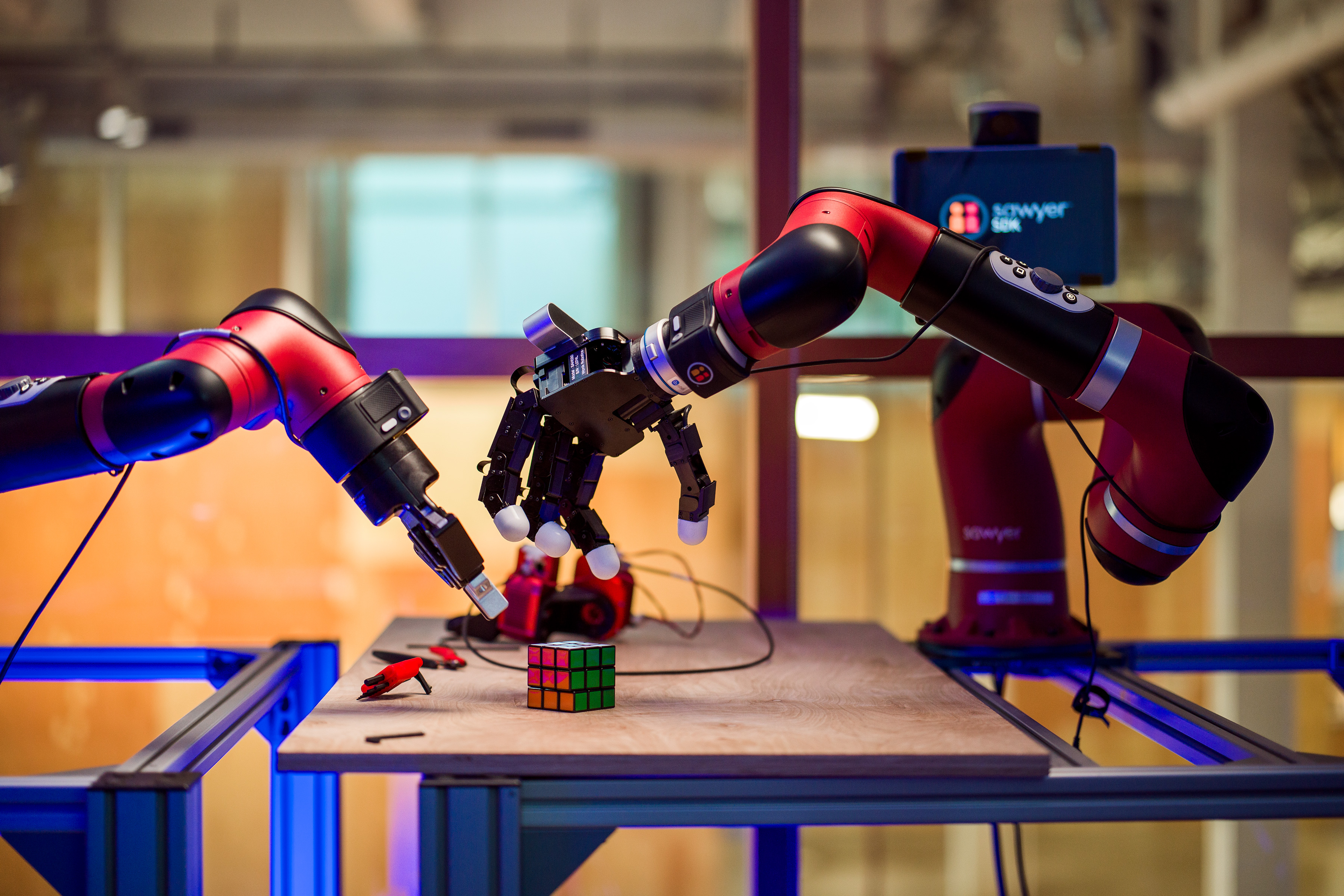Facebook is now dabbling with robots to help make its AI smarter

Facebook’s efforts to build intelligent helpers show how badly AI needs some sort of grounding in the physical world.
Robots rising: Facebook is showing off a new robotics lab at its Silicon Valley headquarters, along with several research projects that involve robots learning how to do different things. So is the company looking to add arms and legs to its Portal devices to let them explore your home?
Advancing AI: Nope (luckily). The project is actually a very natural extension of the company’s existing AI research. Machine learning can be used to teach robots how to do things that would be impossible to program. So the project might have practical applications somewhere down the line. More important, though, the way robots learn about the world can feed back into the algorithms applied elsewhere.
Curiouser and curiouser: As with Facebook’s other AI research, the robotics team is focused on developing algorithms that learn with minimal human supervision. An interesting aspect of their approach is a kind of machine curiosity algorithm that lets the robots learn without trying to achieve a specific end goal.
Real experience: This is important when you consider Facebook’s ongoing efforts to build a virtual helper of some kind. Simply training an AI algorithm on conversational text isn’t enough to create something capable of having a decent chat. As experts will tell you, that’s partly because those algorithms lack the understanding of the physical world that we take for granted.
Bio-inspired: “The only example of intelligence we have is humans or animals,” says one of Facebook’s AI research scientists, Roberto Calandra. “If we want to re-create the kind of intelligence we have in humans and animals, it seems very plausible that we might need that physicality.”
Deep Dive
Artificial intelligence
Large language models can do jaw-dropping things. But nobody knows exactly why.
And that's a problem. Figuring it out is one of the biggest scientific puzzles of our time and a crucial step towards controlling more powerful future models.
Google DeepMind’s new generative model makes Super Mario–like games from scratch
Genie learns how to control games by watching hours and hours of video. It could help train next-gen robots too.
What’s next for generative video
OpenAI's Sora has raised the bar for AI moviemaking. Here are four things to bear in mind as we wrap our heads around what's coming.
Stay connected
Get the latest updates from
MIT Technology Review
Discover special offers, top stories, upcoming events, and more.